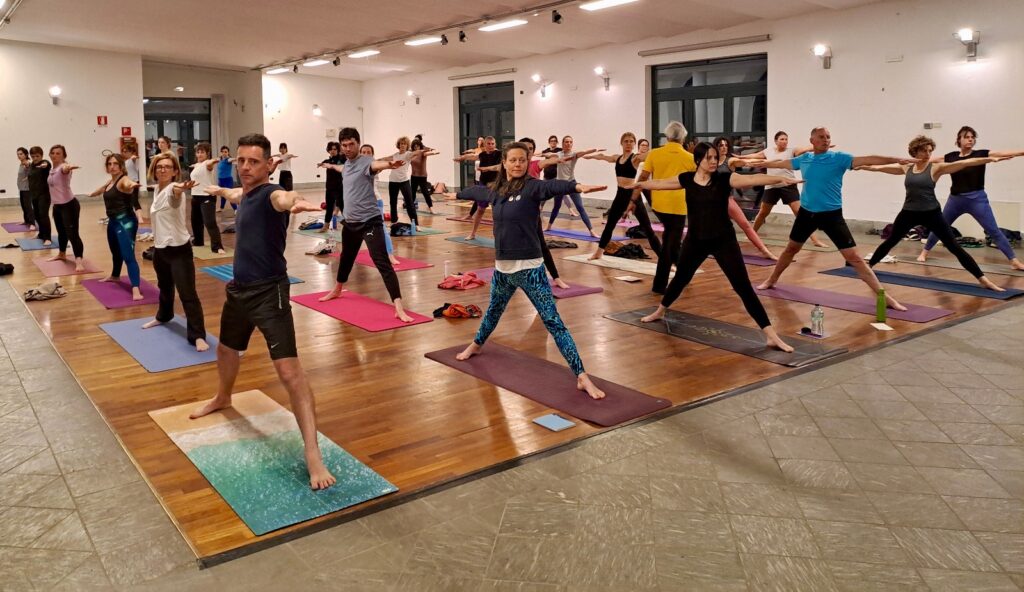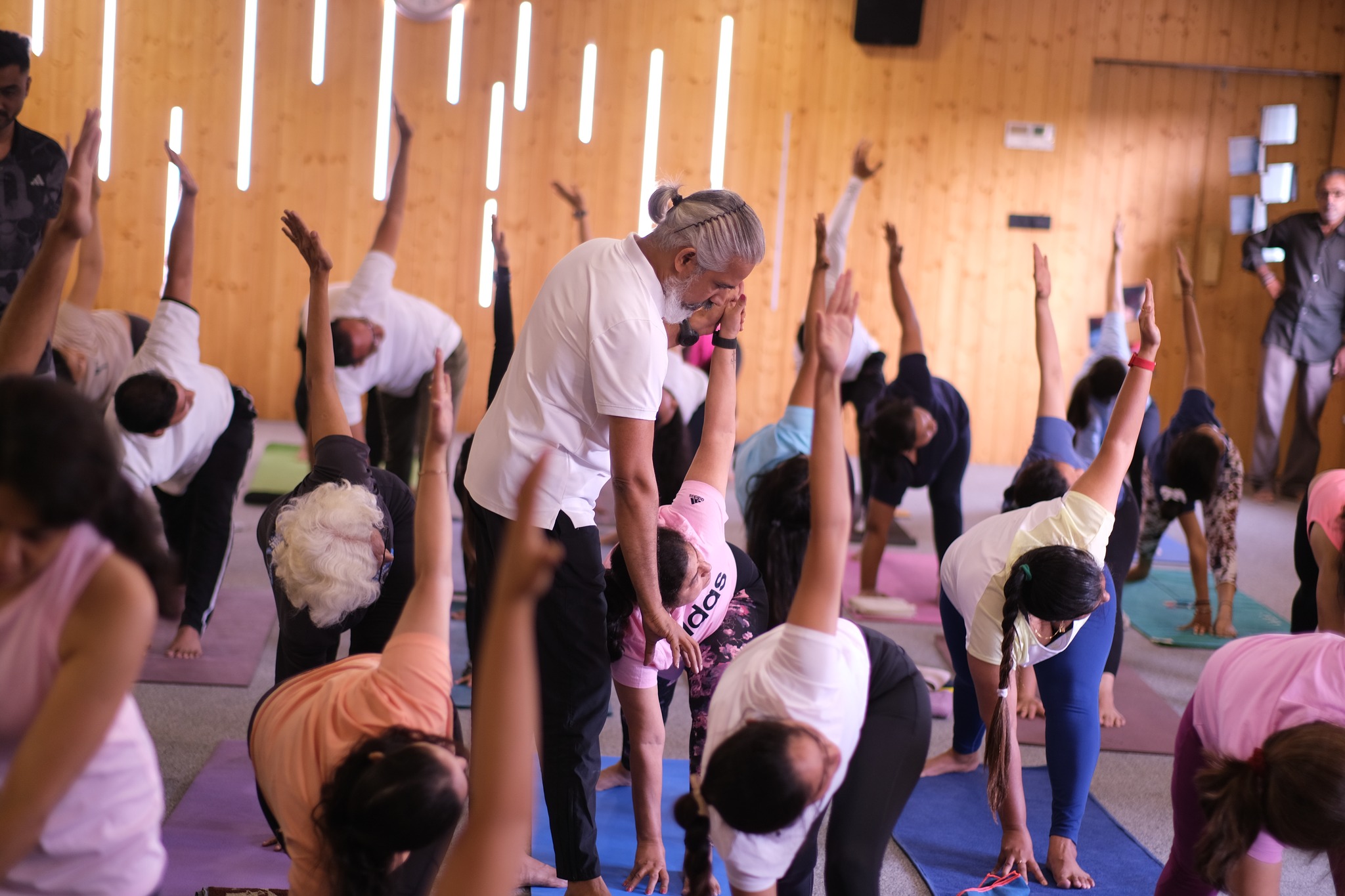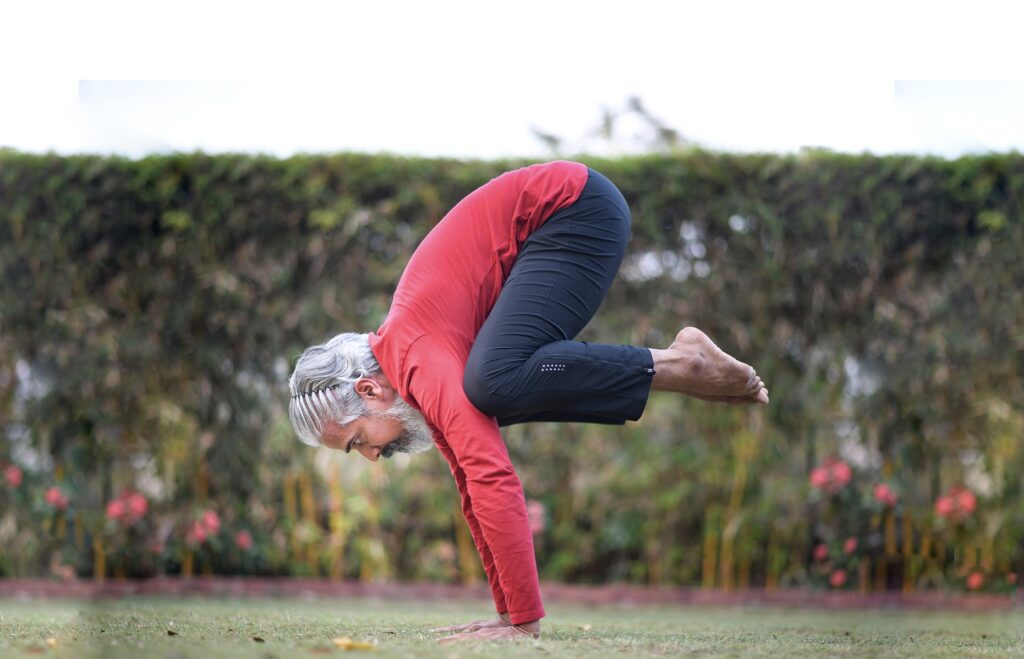How to Practice Ashtanga Yoga Safely ?
You’ve all heard a lot about Ashtanga Vinyasa Yoga practitioners suffering from injuries during their practice. During the late 2000’s these numbers increased across the world. You might be wondering, how is this possible? If Ashtanga Vinyasa Yoga is a gentle, soothing, and grounded practice, why the injuries? Is it possible to avoid these injuries and practice all forms of yoga safely?
Yes, it’s absolutely possible to avoid injuries while practicing Ashtanga Vinyasa Yoga. However that’s possible only by setting your base right, and being more mindful.
Before we dive into the ways you can avoid injuries, let’s first understand why the injuries are so common.
Why are injuries common in Ashtanga Vinyasa Yoga practice?
Majority of the yoga injuries occur in 6 places- the hip, shoulders, knees, wrists, hamstrings, and back.
Majority of the yoga injuries occur in 6 places- the hip, shoulders, knees, wrists, hamstrings, and back.

The most common reason is, lack of mindfulness during the practice. We are always in a rush to get into an asana that we forget the technique and breathing. Like our teacher Acharya Bharat Shetty says- “it’s not important how much you do, but how you do matters.”
Well, if you ask a practitioner with a history of injury, they wouldn’t agree more to this thought.
Let’s decipher why specifically this is true for Ashtanga Yoga practice. Ashtanga Yoga is designed in a way to bring mobility to the body. Every asana is interlinked with a full(poorna) or half(ardha) vinyasa which leads to constant strain on joints if not done mindfully. The balance between the right and left sides of the body is of utmost importance. This repeated movement causes a lot of wear and tear without proper body, breath, and mind coordination.
The other cause for injuries is the competitiveness amongst practitioners. This leads to repeated practice of a particular asana that overworks a particular joint or muscle. This in turn causes serious damages over a period of time. When an imbalanced body is subjected to repeated movements, overstretching, overarching, or is overstrained, inflammations, pain, and injuries become common.
How to avoid injuries while practicing Ashtanga Vinyasa Yoga?
If you are a beginner or if you aren’t sure if practicing Ashtanga Vinyasa Yoga is right for you, do not worry. We will break this practice down to make it a little easy for you.
Lot of practitioners think Ashtanga Vinyasa is strength building practice, and requires a lot of arm strength. This mindset leads to an egoistic practice, use of one’s body strength without coordinating movement and breath, leading to injuries. As a matter of fact, Ashtanga Vinyasa Yoga in terms of intensity is moderate. The lack of preparation in basic alignment, and breath coordination, this practice could take a toll on the body, making you tired post practice.
To avoid these problems, we recommend that you take a step back, focus on basic mind, body, and breath coordination. Always learn the asanas with proper technique, and prepare the body well before starting the practice of Ashtanga Vinyasa Yoga.
Well, we know what you’re thinking- ‘All of this is great advice, but how to go about this? What to do if not the Ashtanga Vinyasa Primary series?’
The solution is Foundation Series – wondering what new series this is?
This series is a less intense version of the Primary series. Hatha Yoga Foundation series has all the asanas that are in the Primary series, with classical Suryanamaskara, and asanas which focuses on alignment, breath, mounting & dismounting. This is a more calming practice, not too dynamic like the Ashtanga Vinyasa Primary series. This helps in grounding, strengthening, and opening up the hip in all directions to practice advanced asanas in the future.

Foundation Series:
The Hatha Yoga Foundation series prepares the body, breath, and mind to practice series like the Primary series. The series helps in deepening the breath in all the asanas.
What to practice? What does the Foundation sequence look like?
This series starts with classical Suryanamaskara which sets the base for Vinyasas in the Primary Series. Continued with standing asanas, back bends, seated asanas, and finishing sequences that are all similar to the Primary series. But in this series, the asanas are not connected with Vinyasas. After each asana, we come back to Tadasana (the starting posture) before moving to the next asana.

The sequence focuses on proper mounting and dismounting from asanas. It gives time for a practitioner to ground themselves, bring more stability and awareness to their practice, at their own pace. This helps practitioners to work on both sides of the body equally without overworking on their stronger side ,leaving the other side weak and inefficient.
Is it safe to practice the Foundation Series?
Absolutely yes! Foundation series is one of the safest practices to develop the body and breath coordination. It improves strength and flexibility, and brings equanimity in the body.
However like any other practice, it is possible to have injuries in this series as well. This series includes some of the challenging asanas like Bhujapidasana, Sirsana, Karnapidasana, etc that takes time for the body to practice. Some practitioners force themselves to try these asanas without proper preparation. This certainly leads to injuries, and eventually losing interest in the practice altogether.
As per Yoga Sutras written by Sage Patanjali, each one of us need to overcome five kleshas- Avidya (ignorance), Asmita (I-ness, ego sense), Raga (attachment), Dvesha (aversion), and Abhinivesah (fear of death, clinging to life) to attain peace of mind. Applying this philosophy to our practices, we should not be ignorant, egoistic, attached, hate, or fear and fight with our practice.
If we keep this in mind, and practice, we can be free from injuries, or any kind of pain, all we can experience is pure bliss at the end of each practice.
If you are curious to know how or if this series will work for you, check out the Foundation Series sequence here.


